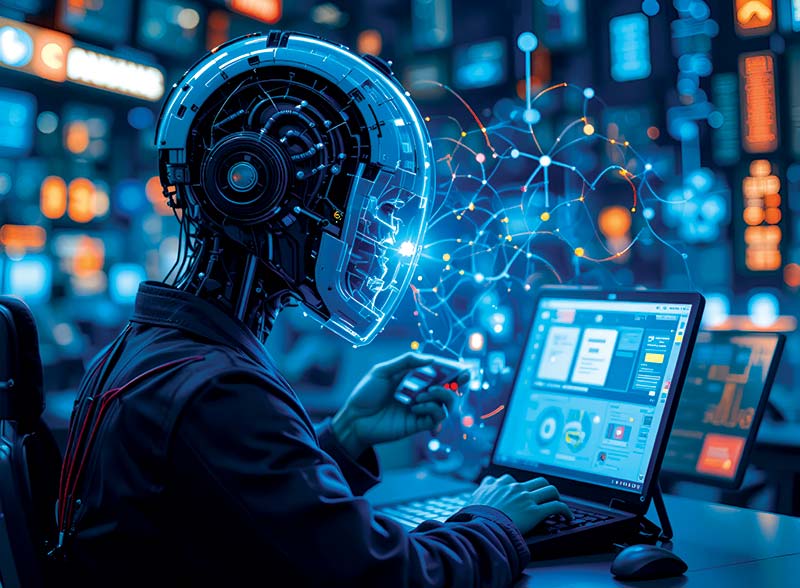Jim VandeHei and Mike Allen
Amodei started Anthropic after leaving OpenAI, where he was VP of research. His former boss, OpenAI CEO Sam Altman, makes the case for realistic optimism, based on the history of technological advancements.
“If a lamplighter could see the world today,” Altman wrote in a September manifesto — sunnily titled “The Intelligence Age” — “he would think the prosperity all around him was unimaginable.”
But far too many workers still see chatbots mainly as a fancy search engine, a tireless researcher or a brilliant proof reader. Pay attention to what they actually can do: They’re fantastic at summarising, brainstorming, reading documents, reviewing legal contracts, and delivering specific (and eerily accurate) interpretations of medical symptoms and health records.
We know this stuff is scary and seems like science fiction. But we’re shocked how little attention most people are paying to the pros and cons of superhuman intelligence.
Anthropic research shows that right now, AI models are being used mainly for augmentation — helping people do a job. That can be good for the worker and the company, freeing them up to do high-level tasks while the AI does the rote work.

What seems like science fiction today will soon become a scary reality which will catch all
The truth is that AI use in companies will tip more and more toward automation — actually doing the job. “It’s going to happen in a small amount of time — as little as a couple of years or less,” Amodei says.
That scenario has begun:
Hundreds of technology companies are in a wild race to produce so-called agents, or agentic AI. These agents are powered by the LLMs. You need to understand what an agent is and why companies building them see them as incalculably valuable. In its simplest form, an agent is AI that can do the work of humans — instantly, indefinitely and exponentially cheaper.
Imagine an agent writing the code to power your technology, or handle finance frameworks and analysis, or customer support, or marketing, or copy editing, or content distribution, or research. The possibilities are endless — and not remotely fantastical. Many of these agents are already operating inside companies, and many more are in fast production.
That’s why Meta’s Mark Zuckerberg and others have said that mid-level coders will be unnecessary soon, perhaps in this calendar year.
Zuckerberg, in January, told Joe Rogan: “Probably in 2025, we at Meta, as well as the other companies that are basically working on this, are going to have an AI that can effectively be a sort of mid-level engineer that you have at your company that can write code.” He said this will eventually reduce the need for humans to do this work. Shortly after, Meta announced plans to shrink its workforce by 5 per cent.
There’s a lively debate about when business shifts from traditional software to an agentic future. Few doubt it’s coming fast. The common consensus: It’ll hit gradually and then suddenly, perhaps next year.
Make no mistake: We’ve talked to scores of CEOs at companies of various sizes and across many industries. Every single one of them is working furiously to figure out when and how agents or other AI technology can displace human workers at scale. The second these technologies can operate at a human efficacy level, which could be six months to several years from now, companies will shift from humans to machines.
This could wipe out tens of millions of jobs in a very short period of time. Yes, past technological transformations wiped away a lot of jobs but, over the long span, created many and more new ones.
This could hold true with AI, too. What’s different here is both the speed at which this AI transformation could hit, and the breadth of industries and individual jobs that will be profoundly affected.
You’re starting to see even big, profitable companies pull back:
Microsoft is laying off 6,000 workers (about 3 per cent of the company), many of them engineers.
Walmart is cutting 1,500 corporate jobs as part of simplifying operations in anticipation of the big shift ahead.
CrowdStrike, a Texas-based cybersecurity company, slashed 500 jobs or 5 per cent of its workforce, citing “a market and technology inflection point, with AI reshaping every industry.”
(To be concluded)
Mike is the Co-Founder and Jim is the CEO of American news website Axios



